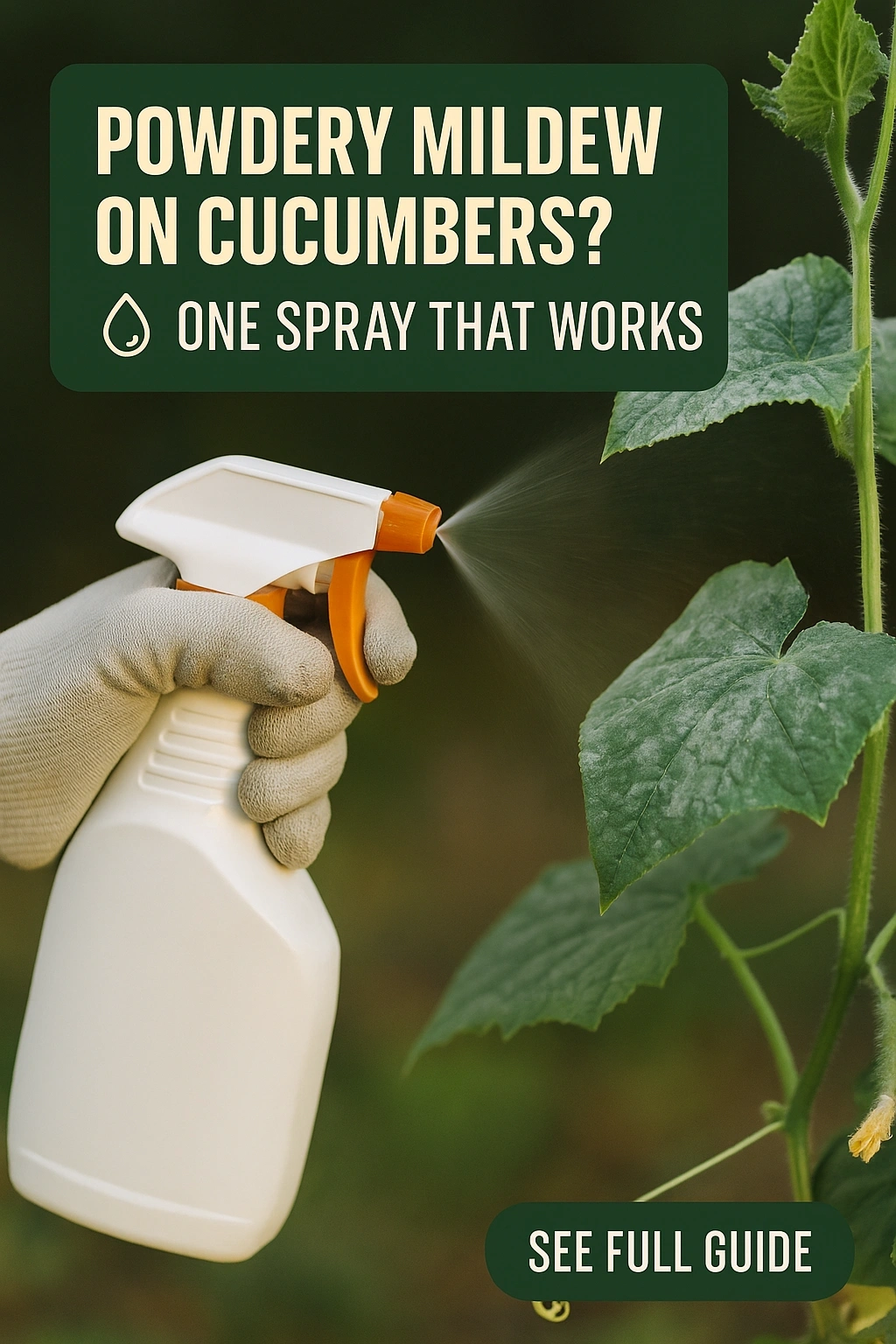
Powdery mildew is a common fungal disease that affects cucumbers, leading to reduced yields and poor quality fruit. This white, powdery substance appears on leaves, stems, and fruits, often resulting in stunted growth and premature leaf drop. Understanding how to identify and manage powdery mildew is crucial for any gardener looking to maintain healthy cucumber plants. In this article, we will explore practical solutions to combat this issue, including a highly effective spray that can help restore your plants’ vitality.
What is Powdery Mildew?
Powdery mildew is caused by a variety of fungal pathogens, the most common being Erysiphe cichoracearum and Sphaerotheca fuliginea. This disease thrives in warm, dry conditions with high humidity, making cucumber plants particularly susceptible. Once established, the fungus spreads rapidly, affecting nearby plants and leading to significant crop loss if not addressed promptly.
Identifying Powdery Mildew Symptoms
Recognizing the symptoms of powdery mildew is the first step in effective management. Early detection can save your cucumber plants from severe damage. Initially, you may notice small white or grayish spots on the upper surfaces of the leaves. As the disease progresses, these spots enlarge and can cover entire leaves, leading to wilting and yellowing.
Key Symptoms to Look For
- White, Powdery Spots: The most obvious sign, often resembling talcum powder.
- Leaf Yellowing: Affected leaves may turn yellow and become brittle.
- Stunted Growth: Infected plants may show slower growth rates.
- Premature Leaf Drop: Leaves may fall off before their time, impacting overall plant health.
Factors Contributing to Powdery Mildew
Several environmental factors can promote the development of powdery mildew. Understanding these can help you prevent outbreaks. High humidity levels, poor air circulation, and overcrowded plants create an ideal environment for fungal growth. Additionally, excessive nitrogen fertilizer can lead to lush foliage that is more susceptible to mildew.
Environmental Conditions to Monitor
- Humidity: High humidity encourages fungal growth.
- Temperature: Mildew thrives in warm weather, particularly between 60°F and 80°F.
- Air Circulation: Ensure adequate spacing between plants for airflow.
- Fertilization Practices: Balance nitrogen levels to avoid overly lush growth.
Effective Prevention Strategies
Preventing powdery mildew is often easier than treating it once it appears. Implementing a few key strategies can significantly reduce the likelihood of infection. Start with resistant cucumber varieties, which have been bred to withstand powdery mildew. Proper cultural practices, such as crop rotation and maintaining plant health, are also essential in prevention.
Best Practices for Prevention
- Choose Resistant Varieties: Select cucumber breeds specifically marked as resistant to powdery mildew.
- Water Wisely: Water at the base of plants in the morning to reduce humidity around the foliage.
- Improve Airflow: Space plants appropriately to allow for good air circulation.
- Rotate Crops: Practice crop rotation to disrupt fungal life cycles.
One Spray That Works Against Powdery Mildew
When prevention fails and powdery mildew appears, an effective treatment is essential. One highly recommended spray is a mixture of baking soda, horticultural oil, and liquid soap. This combination not only targets the fungus but also helps to prevent its spread. The baking soda alters the pH on the leaf surface, making it less hospitable for mildew.
How to Prepare and Apply the Spray
To prepare this effective spray, you will need:
- 1 tablespoon of baking soda
- 1 tablespoon of horticultural oil
- 1 teaspoon of liquid soap (not detergent)
- 1 gallon of water
Mix the ingredients thoroughly in a spray bottle. Apply the solution in the early morning or late evening to avoid leaf burn. Ensure complete coverage of the affected areas, especially the undersides of leaves where mildew often resides. Reapply every 7 to 14 days, especially after rainfall.
Monitoring and Maintaining Plant Health
After applying the spray, continuous monitoring of your cucumber plants is crucial. Observing any changes in the appearance of the leaves or overall plant health will help you determine the effectiveness of your treatment. Keeping plants healthy through proper nutrition and watering will bolster their resilience against diseases like powdery mildew.
Signs of Recovery
Look for signs of recovery in your cucumber plants, such as:
- New Growth: Healthy new leaves indicate recovery.
- Reduced Discoloration: Yellowing leaves may begin to green again.
- Improved Overall Vigor: Plants should appear more robust and less wilty.
FAQs
What causes powdery mildew on cucumbers?
Powdery mildew is primarily caused by fungal pathogens that thrive in warm, humid conditions. Overcrowded plants and poor air circulation also contribute to its spread.
Can I eat cucumbers affected by powdery mildew?
While powdery mildew itself is not harmful, affected cucumbers may have reduced quality. It is best to remove and discard any heavily infected fruits.
How can I prevent powdery mildew on my cucumbers?
Preventive measures include choosing resistant varieties, ensuring proper spacing for airflow, and practicing good watering habits. Regular monitoring for early signs of mildew is also crucial.
Is the baking soda spray safe for my plants?
Yes, when used as directed, a baking soda spray is safe for plants. It is a natural treatment that can effectively combat powdery mildew without harming the plants.
How often should I apply the powdery mildew spray?
Reapply the spray every 7 to 14 days, especially after rainfall or if you notice new symptoms of powdery mildew.
